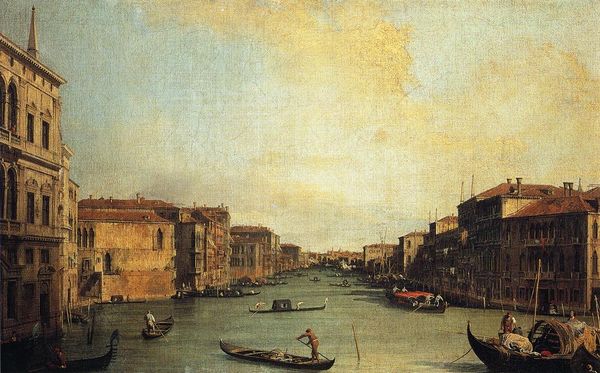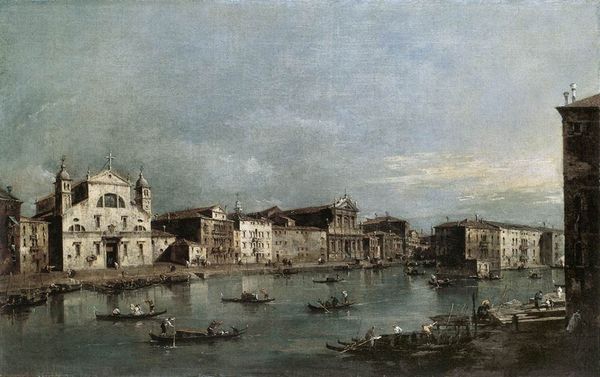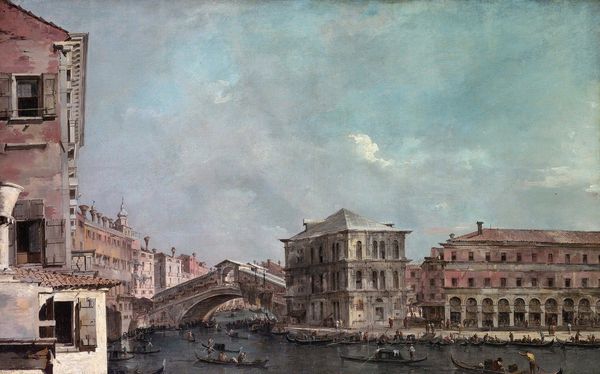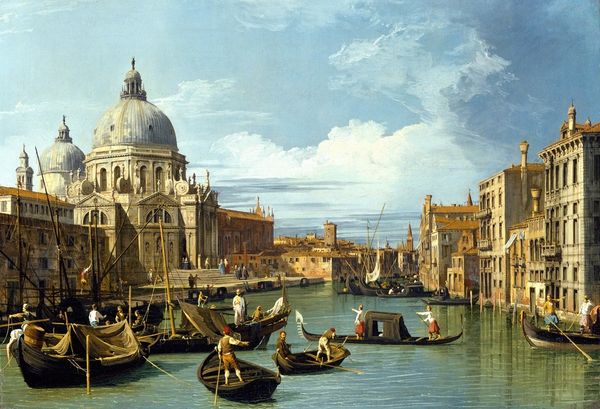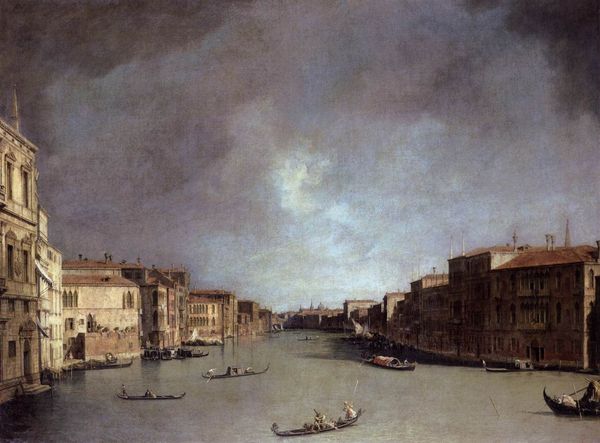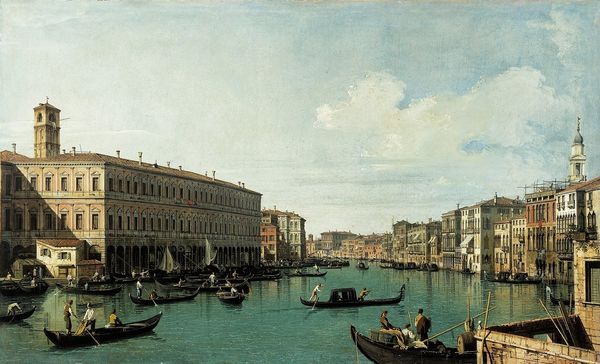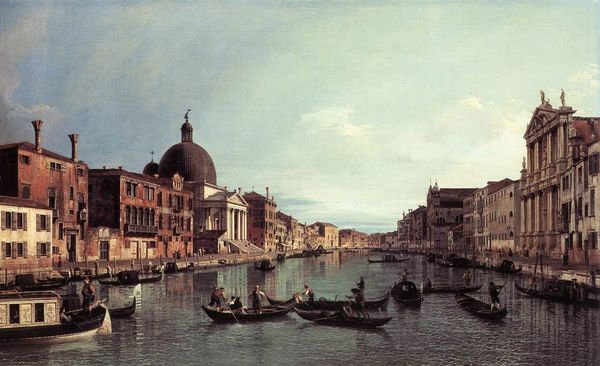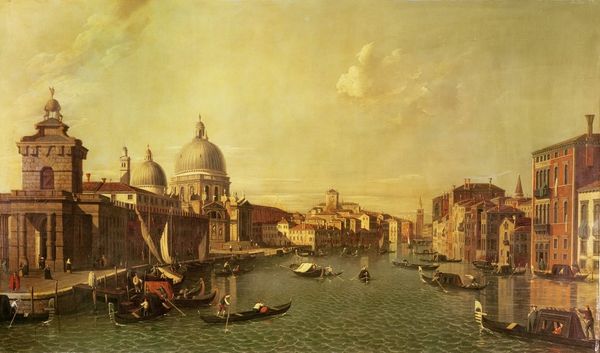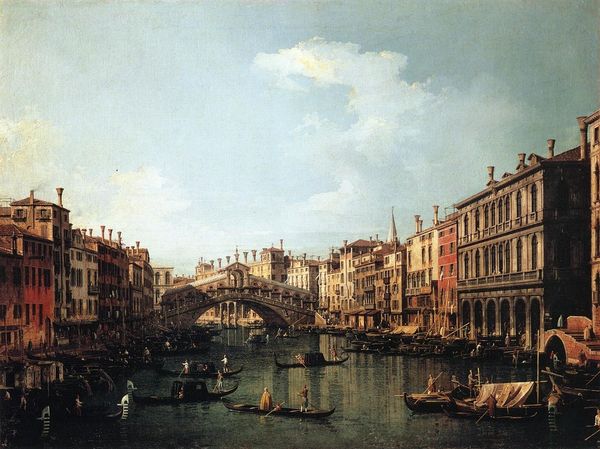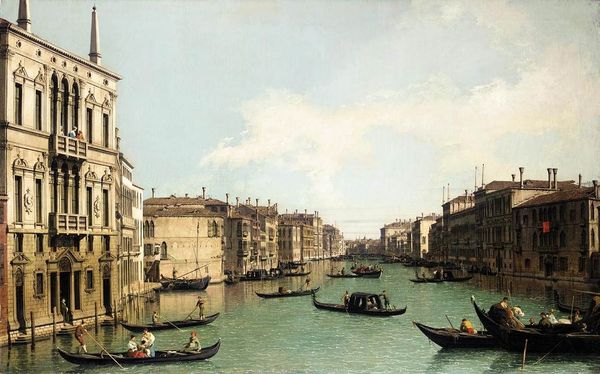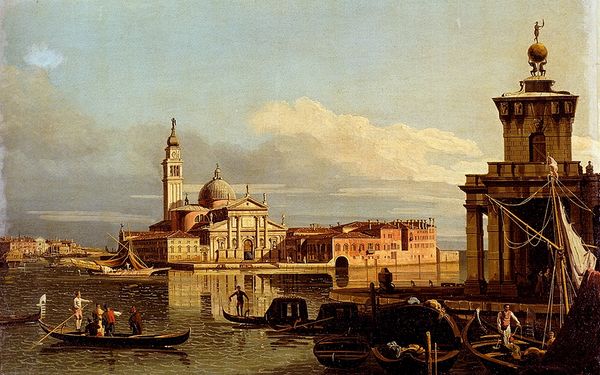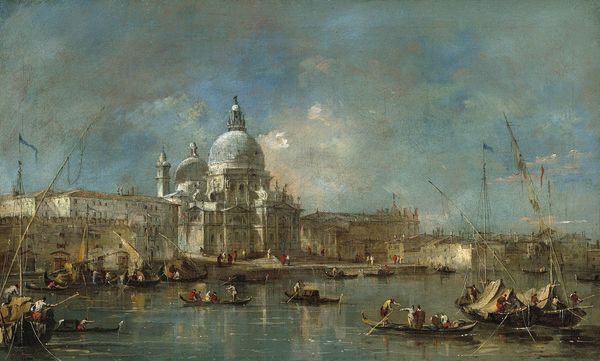
The Grand Canal with San Simeone Piccolo and Santa Lucia 1780
0:00
0:00
francescoguardi
Thyssen-Bornemisza Museum, Madrid, Spain
#
boat
#
sky
#
abstract painting
#
abandoned
#
ship
#
sculpture
#
charcoal drawing
#
possibly oil pastel
#
oil painting
#
derelict
#
acrylic on canvas
#
underpainting
#
water
#
watercolor
Dimensions: 48 x 78 cm
Copyright: Public domain
Editor: Here we have Francesco Guardi’s "The Grand Canal with San Simeone Piccolo and Santa Lucia," painted around 1780. It's quite a detailed oil painting, and what strikes me most is the incredible reflection of the buildings on the water, creating almost a mirror image. What do you see in this piece? Curator: Well, focusing on the material aspects, consider the pigments Guardi employed and where they were sourced. The subtle variations in the water's surface – achieved through layers of paint and deliberate brushwork – weren't merely aesthetic choices. They reflected Venice's dependence on trade routes for the very materials of artistic creation. What labor went into that ultramarine, do you think, or that lead white? Editor: That's fascinating. I hadn't really considered the source of the pigments before. So, the very act of painting this scene was tied to Venice's economic activities? Curator: Precisely! And it’s not just about sourcing the materials. Look at the gondolas, their construction and who commissioned and used them. They are crucial components, essential tools within the waterborne society. They represent labor, trade, and social stratification, wouldn't you agree? Editor: I suppose I was just admiring the picturesque scene and I didn’t reflect upon how the canal’s traffic provided income. That gives me something else to consider when viewing this painting, and other landscapes of this time. Curator: Exactly. This reframes the artwork as a document of material culture, a product of – and commentary on – the economic and social conditions of its time. Consider it a visual ledger of sorts. Editor: That's definitely changed how I see Guardi’s painting. I realize I need to look beyond the aesthetic qualities and consider the broader context of production and consumption that shaped its creation. Curator: Indeed. Every brushstroke, every pigment, tells a story of labour, trade, and the interconnectedness of Venetian society.
Comments
No comments
Be the first to comment and join the conversation on the ultimate creative platform.
